2018 Year in Review
A message from MOCJ Director Liz Glazer
New Yorkers are embarked on the biggest justice reform effort in a generation, at a moment when crime and incarceration in our city are at the lowest rates in decades and the touch of enforcement is lightening as well. Our challenge now involves nothing less than rethinking and redoing completely how we live peaceably together. We are making a turn from safety enforced by the justice system to safety built by neighborhoods. The evidence from the past few years is beginning to show how civilianizing safety may make for a more durable peace and begin to address the knot of poverty, race and justice that has confounded us for so long.
We invite you to read about some of these efforts and look forward to your ideas, comments and partnership to build organic safety from the neighborhood up.
MAP team launches Local NeighborhoodStat
Throughout the year, the Mayor’s Action Plan for Neighborhood Safety (MAP) team rolled out Local NeighborhoodStat in all 15 MAP communities. NeighborhoodStat is a problem identification and solving process that brings together government, residents, nonprofits and others. It is the central component of MAP, originally operated solely at a borough-wide level. By operating at the local level as well, it ensures more residents have the opportunity to have their voices heard. Local NeighborhoodStat meetings are led by community teams made up of residents and partners from over 10 city agencies.
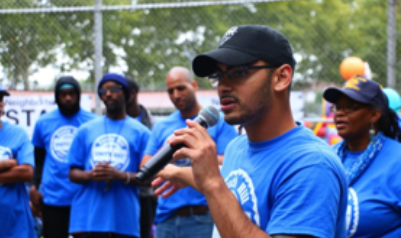
“We want to let people know that if we can work with police, you can. If we can work with city agencies, you can. So let’s unify. Unity is key.”
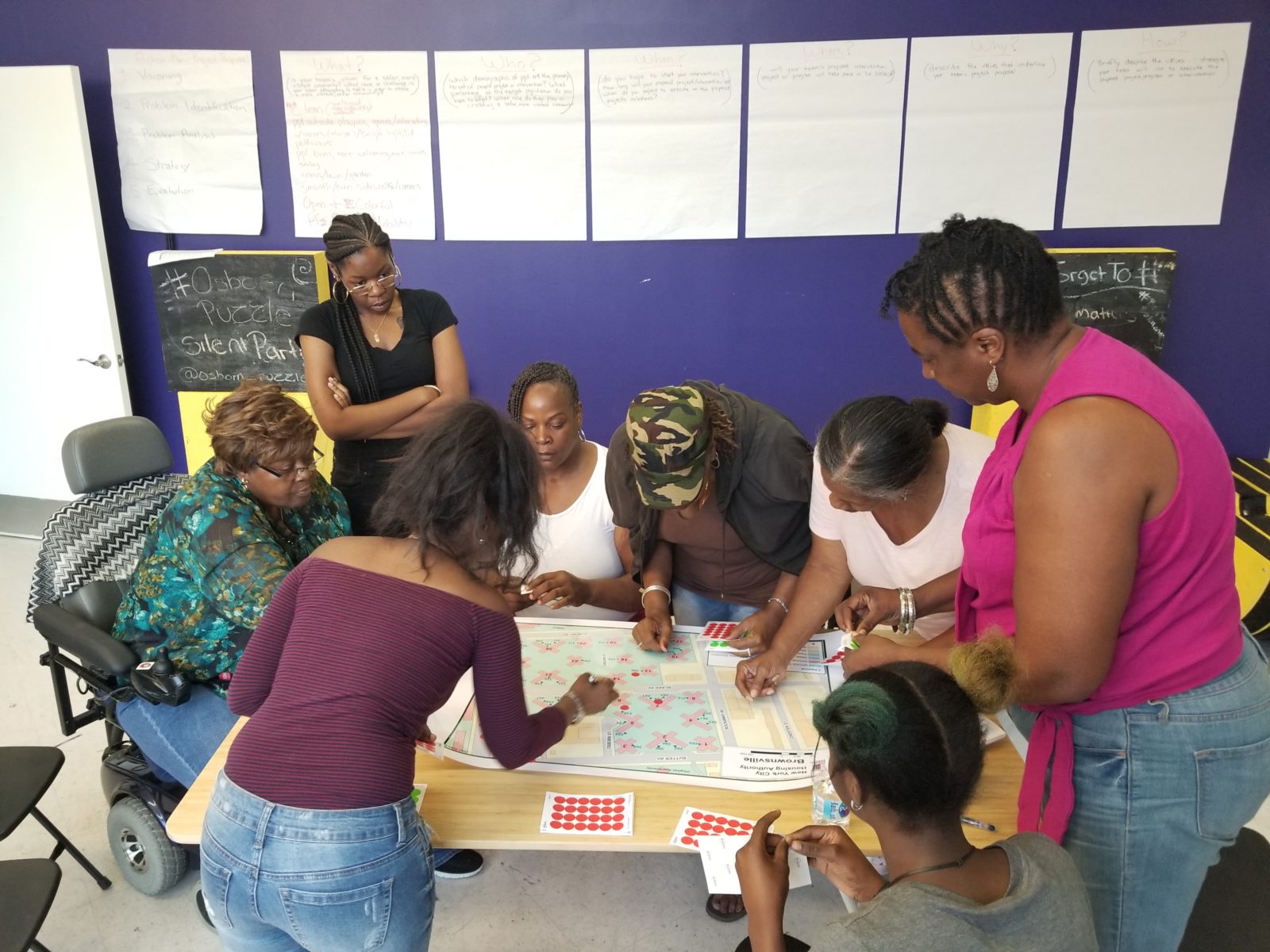
Read more about MAP in the New York Times: Trying to Cut Crime in Public Housing by Making It More Livable.
Public Art Series Enhances Safety and Community Connection in the Bronx
Working with Bronx-based photographers, artists and community organizations, the MAP team, the New York City Department of Cultural Affairs (DCLA) and the Bronx Documentary Center (BDC) kicked off Claremont Illuminated, a series of specially designed nighttime artworks and programming that promote community safety and connections. The partnership was recognized by the National Endowment for the Arts with an Our Town grant, which supports projects that integrate arts, culture, and design activities into efforts that strengthen communities by advancing local economic, physical, and/or social outcomes.
Claremont Illuminated is one example of Neighborhood Activation—a new approach by the Mayor’s Office of Criminal Justice to support public safety through community engagement and design. Check out the Neighborhood Activation Study to learn more about how design can be a tool to help reduce crime.
Stay tuned for a Save the Date for Claremont Illuminated 2019.
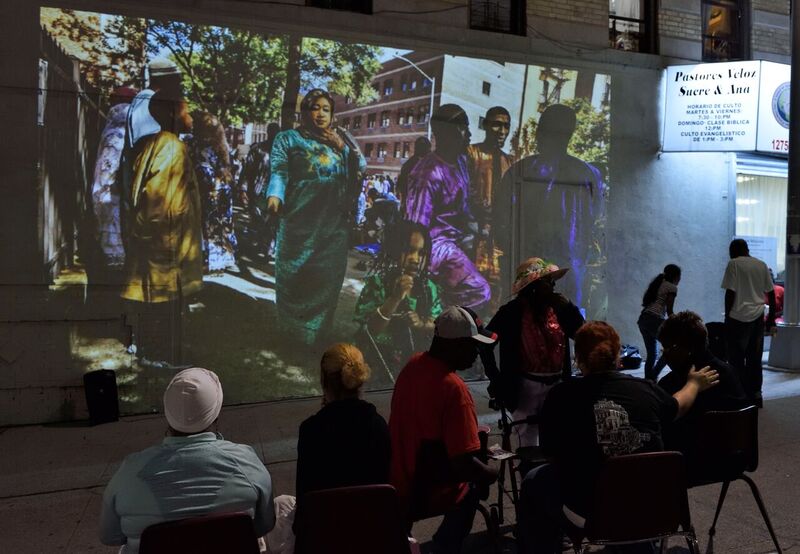
“While working on this project, I spent nights and weekends walking around Claremont, engaging with the community. All I needed to do was listen and the stories began to flow. Claremont Village is full of strength and tenacity and it is important that their stories are shared.”
Investing in communities working on the ground to end gun violence in New York City
The Mayor’s Office to Prevent Gun Violence (OPGV) coordinates the city’s various anti-gun violence initiatives, introduces technological solutions, and amplifies community-based intervention and prevention services that have helped make New York City one of the safest big cities in the nation. In July, alongside community members and partners, OPGV announced an additional $34 million investment in evidence-based strategies to prevent gun violence throughout the city. The new funding enables OPGV to launch five Mobile Trauma Units, expand the Crisis Management System (CMS) with four new locations in the Bronx and Brooklyn, hire six new Domestic Violence Coordinators, and support the formation of a new Public Safety Coalition in Bushwick following the success of the first coalition in East Flatbush.
“We’re continuing to build on the network we’ve created to co-produce public safety and to make positive, enduring change in the lives of New Yorkers. Together with our partners and community members, we’re leading the way toward peace.”
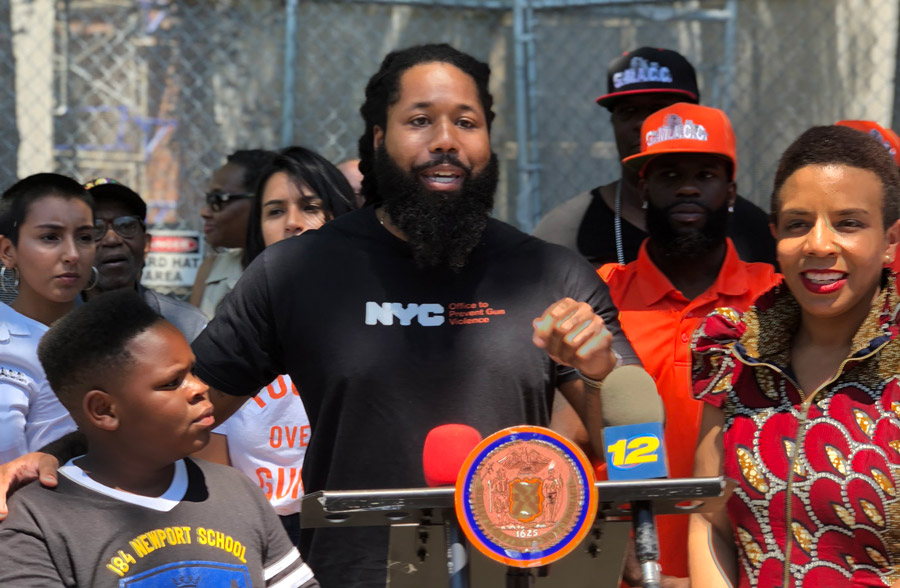
OPGV is built on the understanding that violence is a crisis with roots in social-structural inequality, economic distress, trauma, behavioral and public health. Law enforcement alone cannot address the gun violence epidemic—it’s necessary to support and amplify effective community-led strategies.
Read the Patch story about the newest CMS site made possible by this additional investment.
Read the Bloomberg story: NYC Dives Into Tough Neighborhoods, Emerges as Safest Big City.
Young people across NYC paint Soles for Peace
OPGV’s Peer Leadership Committee Peace Ambassadors are New Yorkers ages 16 to 24 who have been impacted by gun violence and are looking to affect change in New York City. Peace Ambassadors host anti-violence events and facilitate discussion across the city on how to promote peace. Throughout the summer of 2018, the ambassadors partnered with Kick Your Game (KYG) to host Soles for Peace, a series of painting sessions encouraging young people to meaningfully express the impact of gun violence experienced in their communities. Using sneakers as their canvases, young people across the five boroughs painted their visions for peace.
Learn more about the Peace Ambassadors’ and what drives them to promote peace.
Read the BK Reader story: Brownsville Youth Paint ‘Soles for Peace’ Against Gun Violence.
“My experience with the Soles for Peace event was enjoyable. It’s always great to connect with community especially the youth and discuss why violence is not the answer to resolve conflict. Their drawings illustrated what peace looks like and means for them. It also signified why our work as youth leaders plays a role in making change. Having youth like us speak with our peers in standing up against violence and building healthier communities is important. We can reach the youth in ways that general messaging does not.”
Peace Ambassadors spread their message of peace on social media
OPGV partnered with iHeart radio to launch the #PeaceNYC campaign, aimed at amplifying voices of community members who work to prevent violence in the city, and to inspire more people to get involved. The campaign featured messages from advocates, survivors of gun violence, and families who have lost loved ones to gun violence. You can still show your support for ending gun violence by creating your own personalized message and sharing it on social media using the hashtag #PeaceNYC.
Listen to Peace Ambassador Al Tabar’s message for his peers.
Watch News12’s story about the Peace Ambassadors’ work to leverage the power of social media.
Preserving homes and communities for New Yorkers
The Mayor’s Office of Special Enforcement (OSE) is an innovative, solutions-oriented task force that ensures NYC communities are safe from harmful illegal and unregulated industries such as the illegal short-term rental industry. In 2018, OSE responded to 2,600 complaints from the public and issued nearly 4,000 violations to ensure our communities stay secure and vibrant.
Watch the ABC7 story about a dangerous illegal short-term rental in New York City.
Visit nyc.gov/ose to learn more about the Mayor’s Office of Special Enforcement.
New York City’s alternative to money bail hits major milestone
Supervised Release, New York City’s alternative to money bail, served its 10,000th client in 2018. Launched citywide in March 2016, Supervised Release was developed by judges, prosecutors, and defenders, and is one of the key initiatives safely driving down the city’s jail population. Supervised Release gives judges the option to release eligible people who might otherwise have bail set into a supervised community program. The program tailors requirements to the individual participants. The program was named a finalist in Harvard’s Innovation in Government Awards.
Read The New York Times’ story: Jail or Bail? There’s a New Option.
Read more about Supervised Release from amNY.
See the latest facts about reducing the jail population in New York City.
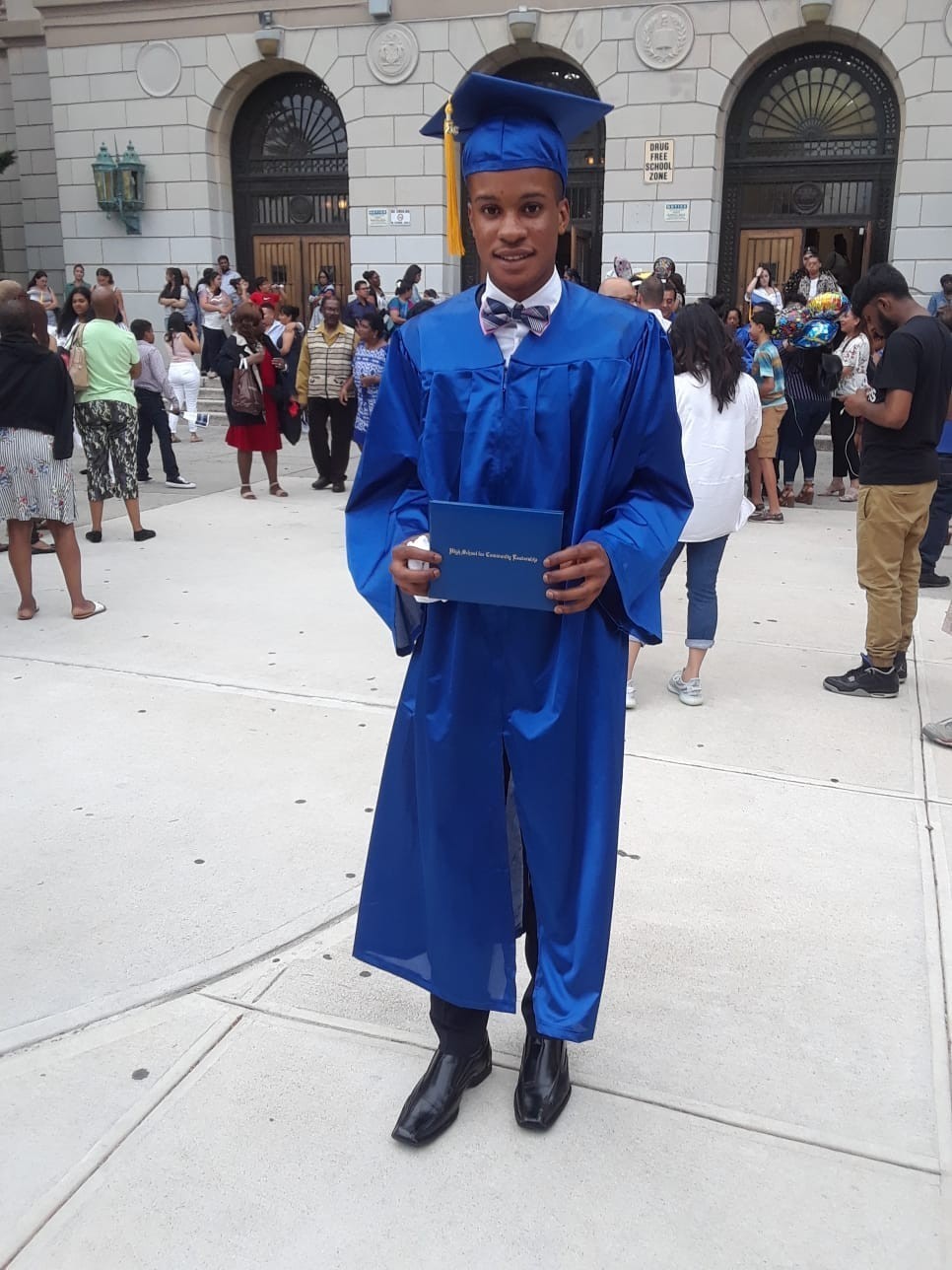
City reduces barriers to paying bail by launching an online bail payment system
“People should not be in jail based on the size of their bank account and no one should stay in jail because a family member was unable to get a day off from work to go to court or a correctional facility.”

Trying to pay bail in person and during business hours can be a time-consuming process due to travel times, security clearances and wait times. The City’s new online bail system helps make sure people don’t stay in jail simply because a friend or relative cannot get to court or a Department of Correction (DOC) facility to pay in person. By the end of 2018, there were 274 people who were released via online bail payment since the service launched at the end of April. The number of people held on bail for under $2,000 is down 65% since the beginning of the administration.
Read more about how NYC is working to reform the bail system.
As of October 1, 2018, all 16- and 17-year-olds were moved from Rikers Island to dedicated juvenile facilities with the services they need to reenter the community and prevent reentering jail. In April 2017, New York State passed long-awaited legislation that raised the age of criminal responsibility to 18 years old, amending outdated laws that automatically treated 16- and 17-year olds as adults. These reforms mean the majority of cases involving adolescents are heard first in Family Court, with others going to a new specialized Youth Part in Criminal Court to address 16- and 17-year-olds charged with more serious crimes.
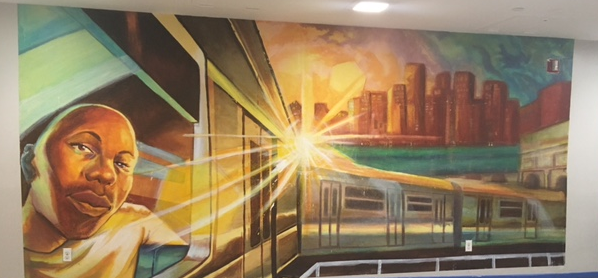
“Kids will be treated like kids instead of adults. This is an historic moment for criminal justice reform and another step toward replacing Rikers Island with smaller, safer, more humane facilities that are closer to communities and loved ones.”
A huge step forward on the path to closing Rikers Island
“Every day we are making New York City’s jail system smaller and safer”
In August 2018, the de Blasio administration unveiled plans for the building of four modern, community-based jails throughout the city that will allow the City to move toward closing the jails on Rikers Island on the fastest timeline possible. The innovative plan envisions facilities that will be fully integrated into the surrounding neighborhoods with community space, ground-floor retail and parking. The planned facilities will provide a safer environment for those who work and are detained in the facilities. They will also allow people in jail to remain closer to their loved ones, as well as offer quality health, education, visitation and recreational services that will help people reintegrate into their communities upon release.
If the U.S. had NYC’s jail population numbers, the national jail population would be cut in half
New York City’s jail population continues to drop, now to its lowest level since 1980. With approximately 8,000 people in jail, NYC has the lowest incarceration rate of any large city in the nation. These declines reflect a fundamental shift in justice reform that has been the work of many inside and outside of government in which crime continues to fall, police arrest less and the system incarcerates less.
Click here to learn more about this milestone and how it was reached.
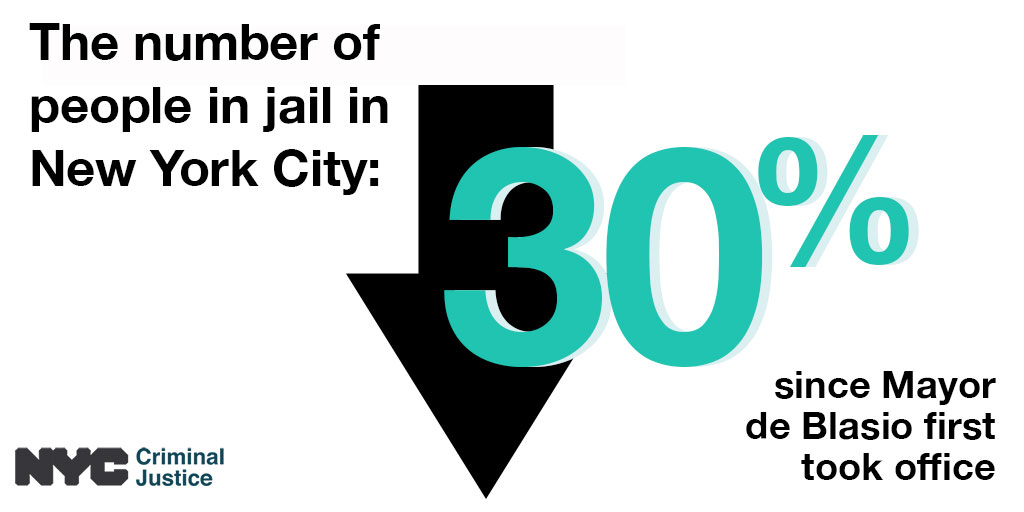
City closes first jail on Rikers Island
Made possible by the dramatic reduction of the City’s jail population, the Department of Correction closed its first jail on Rikers Island.
“Closing a jail is one of many steps toward modernizing our entire justice system. We are reimagining and reforming how jails function as we are safely shrinking the size of the population. This work is possible because of the partnership, from both inside and outside government, to reduce the jail population in a way that makes New York City safer for everyone.”
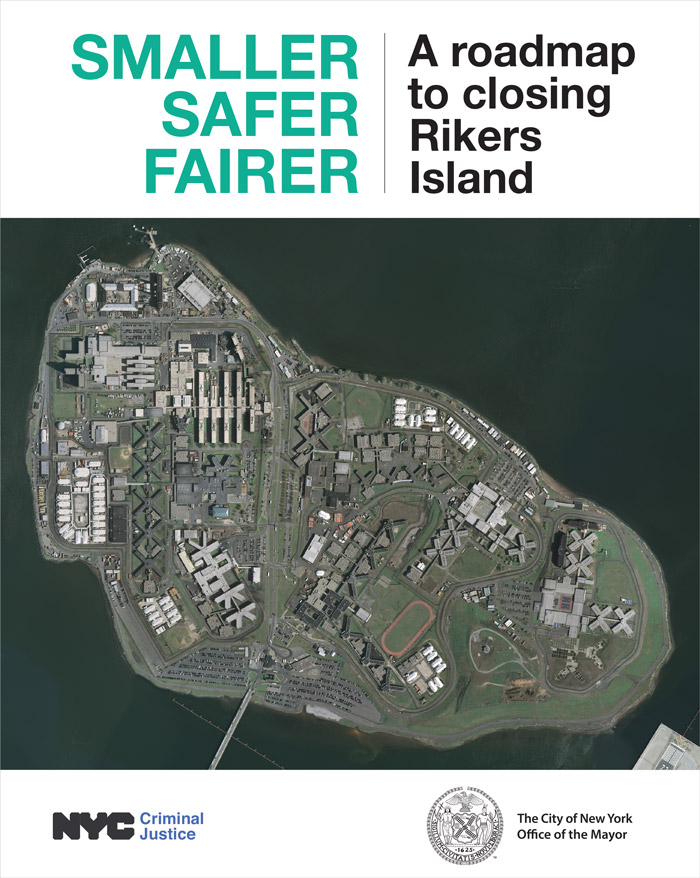
Summons reform: A seismic shift in low-level enforcement
As of June 2018, one year after the city’s Criminal Justice Reform Act (CJRA) went into effect, there is more proportionality in how we enforce the laws, and more people are responding to their summonses. CJRA gives law enforcement the option to issue civil summonses instead of criminal summonses for certain low-level offenses, such as drinking in public. These offenses previously accounted for approximately 50 percent of criminal summonses issued.
Warrants for low-level CJRA offenses plunge 94%

Criminal summonses for CJRA offenses are down 89%

Fair cannabis legalization that promotes equity and opportunity for all
In December 2018, the Mayor endorsed the safe and fair legalization of cannabis in New York. The Mayor also released his Task Force report on cannabis legalization, which calls for a strong, public health-focused regulatory framework and the empowerment of local government to prevent corporate greed, foster small businesses and meet the demands of New York City communities. The report also places great emphasis on the need to ensure that any marijuana industry in New York City rights the wrongs of the past and promotes economic opportunity.
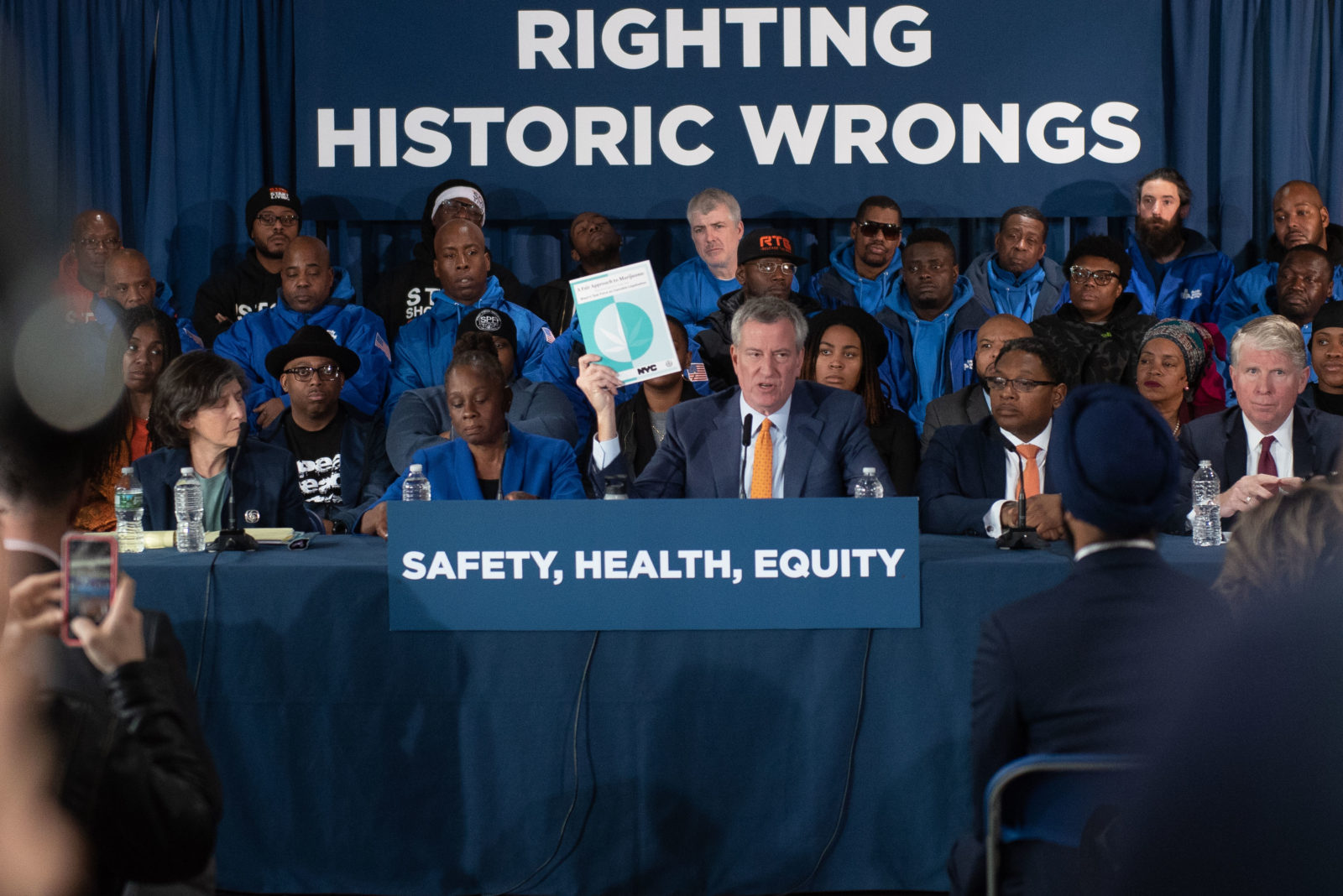
New policy leads to decline in marijuana arrests

“We know that it is not productive to arrest people who have no prior criminal history. In fact, it hampers our efforts to build trust and strengthen relationships with the people we serve, and it does nothing to further the NYPD’s mission of ridding our streets of those responsible for violence and disorder. Issuing summonses for marijuana offenses that do not directly affect public safety will allow our officers to do their jobs effectively and safely, and in a way that always promotes public safety and quality of life for all New Yorkers.”
As of September 1, 2018, the majority of New Yorkers found smoking marijuana in public face criminal summonses instead of arrest—continuing a significant shift in overall marijuana enforcement to better balance fairness with public safety and quality of life concerns.




